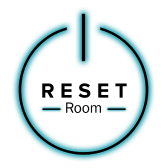Once inside the chamber, you’ll lay down, relax and breathe through an oxygen mask to increase the effective delivery of oxygen into the body. Once the compressor is on, you’ll hear air begin to circulate. You’ll be able to see and talk with our staff through a clear window panel during this time.
While the chamber is compressing, you may experience a full sensation in their ears, similar to driving up or down a mountain road, changing altitudes in an airplane, or changing depths in underwater diving. The feeling of fullness occurs as the eardrums respond to the changes in atmospheric pressure, and will adjust once the chamber is pressurized. To alleviate this, you may try swallowing, moving the lower jaw or blowing air from your lungs out of your nose with your mouth closed and nose pinched.
During the session, you may choose to rest, read, listen to music or watch a movie. You are welcome to bring your cell phone, book, laptop or tablet into the HBOT. Please bring headphones to ensure the enjoyment of all clinic clients.
Near the end of your 60 minute HBOT session, the staff will gradually decrease the chamber pressure, which usually takes a couple minutes. During decompression, patients can once again experience a “popping” sensation in their ears as a result of the decreasing pressure.
